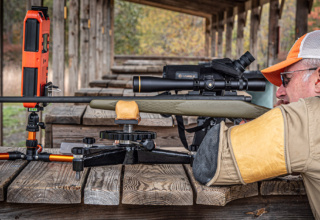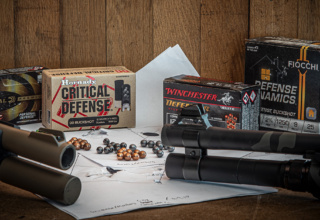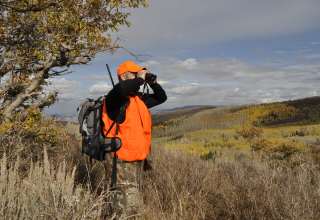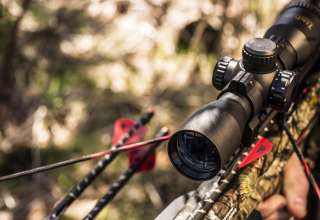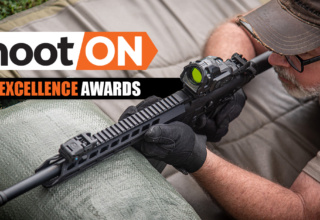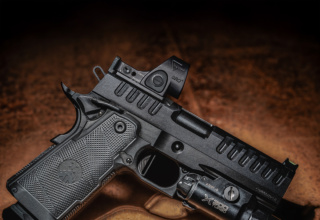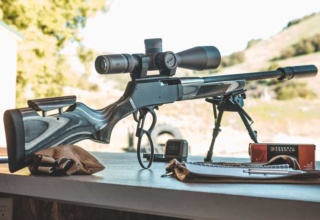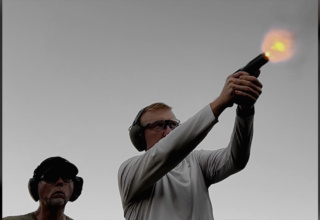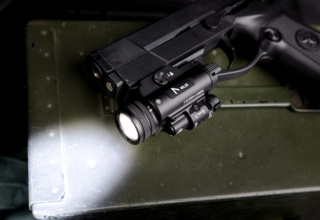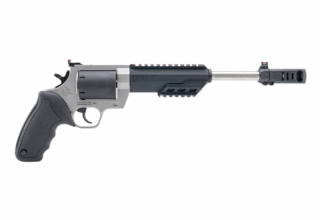The wide-open spaces of the Great Plains and Rocky Mountain West harbor some of Americas greatest game animals and create incredible hunting challenges and memories among those who pursue them. Long range hunting in the West isn’t a matter of choice, it’s often the only option. Along with savvy strategies, hunters need specific gear to meet the challenge of extended range, including flat shooting rifle, crystal clear scopes, and a host of shooting accessories to enhance accuracy and ethical harvests.
Cartridges that Count
 The 30-30 and other straight wall cartridges may have won the West, but they are not preferred hunting rounds in most hunting circles. Magnum calibers such as the 7mm Remington or .300 Win Mag, .30-06 Springfield, .270 Winchester, and the new 6.5 Creedmoor have proven to be standouts at longer range for accuracy and a quick demise.
The 30-30 and other straight wall cartridges may have won the West, but they are not preferred hunting rounds in most hunting circles. Magnum calibers such as the 7mm Remington or .300 Win Mag, .30-06 Springfield, .270 Winchester, and the new 6.5 Creedmoor have proven to be standouts at longer range for accuracy and a quick demise.
Most hunting outfitters and cartridge manufacturers recommend a 200-yard zero for Western hunts. For example, here’s data on the 30-06 Springfield from the Hornady ballistic chart: 178-grain ELD-X Bullet
Range Drop Velocity (fps) Energy(ft-lbs.)
200 0 2,496 2,462
300 -7.23 2,372 2,224
400 -20.64 2,252 2,004
This quick ballistic snippet shows that a hunter chasing elk, bear, or mule deer can still aim nearly center of the chest at 300 yards resulting in a heart shot and top-of-the-shoulder aim at 400 yards to strike the vitals with a ton of knock-down power.
Sighting Options
 Long-range hunting equates bullet strike with caliber performance. Getting the bullet into the vitals is just as important as the cartridge that got it there. Scopes for long-range hunting fall into two basic categories: traditional duplex reticles with Mil or MOA dots and ballistic compensating scopes that allow the shooter to adjust the reticle to account for distance and wind and place the reticle exactly on target.
Long-range hunting equates bullet strike with caliber performance. Getting the bullet into the vitals is just as important as the cartridge that got it there. Scopes for long-range hunting fall into two basic categories: traditional duplex reticles with Mil or MOA dots and ballistic compensating scopes that allow the shooter to adjust the reticle to account for distance and wind and place the reticle exactly on target.
Both scopes have their place in long range shooting. For the person who will most likely have a brief encounter at 500 yards or less, the traditional duplex works well. If a bull elk or big muley buck suddenly steps into an opening, you must determine range, aim the reticle or mil Dot to adjust for drop and windage, and fire- a process that can be done in a second. If the animal runs toward you or away, you increase or decrease hold-over.
Using a ballistic compensating scope, the shooter must determine range, dial that range by turning the rifle turret and aim dead-on. Although this sounds like a precise method, remember that it will occur at a time of great excitement. If the animal moves and you must stalk closer to take a different shot, will you remember the previous adjustments?
Know the Range
 Distance to a target is critical to all long-range hunting and shooting without this knowledge is just guessing and unethical. Fortunately, hand-held laser rangefinders such as those from Vortex, Sig Sauer, and Nikon greatly simplify this task as well as adjusting for angle. Mountain hunters must often make steep shots up or down a mountain and these laser rangefinders compensate for that angle and provide exact shooting distances. Team them with a compact pair of binoculars like the TRUGLO TruBrite model and you have a dynamic duo.
Distance to a target is critical to all long-range hunting and shooting without this knowledge is just guessing and unethical. Fortunately, hand-held laser rangefinders such as those from Vortex, Sig Sauer, and Nikon greatly simplify this task as well as adjusting for angle. Mountain hunters must often make steep shots up or down a mountain and these laser rangefinders compensate for that angle and provide exact shooting distances. Team them with a compact pair of binoculars like the TRUGLO TruBrite model and you have a dynamic duo.
Range-finding binoculars are an equally good choice and actually reduce the number of devices needed on a hunt. Generally, these models will be larger in size and significantly more expensive than a two-optic program, yet having the ability to search and range-find in a single operation has great appeal.
Steady that Aim
 A solid rest is essential for long-range hunting. Normally, bi-pods come immediately to mind, yet only use them if you are thoroughly familiar with the product. Jim Schell, career Wyoming guide and outfitter views a bi-pod with very mixed emotions. “I have seen guys have easy shots at moderate range, only to watch the animal disappear from sight while the shooter fiddles with the bi-pod,” he says. “Don’t use them unless you practice with them.”
A solid rest is essential for long-range hunting. Normally, bi-pods come immediately to mind, yet only use them if you are thoroughly familiar with the product. Jim Schell, career Wyoming guide and outfitter views a bi-pod with very mixed emotions. “I have seen guys have easy shots at moderate range, only to watch the animal disappear from sight while the shooter fiddles with the bi-pod,” he says. “Don’t use them unless you practice with them.”
Since most back-country hunters usually carry a daypack, use it to steady your rifle and make that precise shot. Teamed with the prone position, this tactic can be rock solid. Shooting sticks can also be an asset and allow a hunter to fire from a sitting or standing position. In a pinch, use a tree, rock, or other immovable object to prefect the shot.
Control Excitement and Maintain Form
The principles of long-range shooting can quickly be dashed with a heart rate that doubles and the heavy breathing that comes with exertion and big game excitement. Realistic practice is paramount before and during a hunt. Locate your longest shooting range back home and practice there. In the field, pick out rocks, stumps or trees at unknown distances, range, and sight for success. When opportunity knocks for real, you will be ready to take that trophy-of-a-lifetime with the shot-of-a -lifetime.
- Long Range Hunting - January 9, 2019
- Travel Smarter with Crossbows - November 24, 2018
- Portable Ambush Blind – The NAP Mantis - September 7, 2018



